Precision Dances on Watch Skin
Microscopic yet monumental, the art of watch engraving turns timekeeping instruments into deeply personal canvases of human imagination.
Watch engraving represents a sublime intersection of technical precision and artistic expression, transforming timepieces from mere functional instruments into extraordinary works of art. Engravings are drawings, ornamentation, numbers or letters appearing on parts of the movement or on parts of the watch case. They play a decorative or identifying role. One of the most iconic examples of hand-engraved timepieces is the Bovet Amadeo Amadeo, which exemplifies the brand’s dedication to exquisite hand-engraving, seamlessly blending artistry with mechanical ingenuity. The case, often crafted from gold or platinum, is meticulously hand-engraved with intricate floral, Baroque, or scrollwork motifs, reflecting Bovet’s heritage in 19th-century decorative watchmaking. The movement bridges and balance cocks are also adorned with delicate engravings, showcasing the skill of master artisans who ensure that every inch of the timepiece is an expression of craftsmanship.
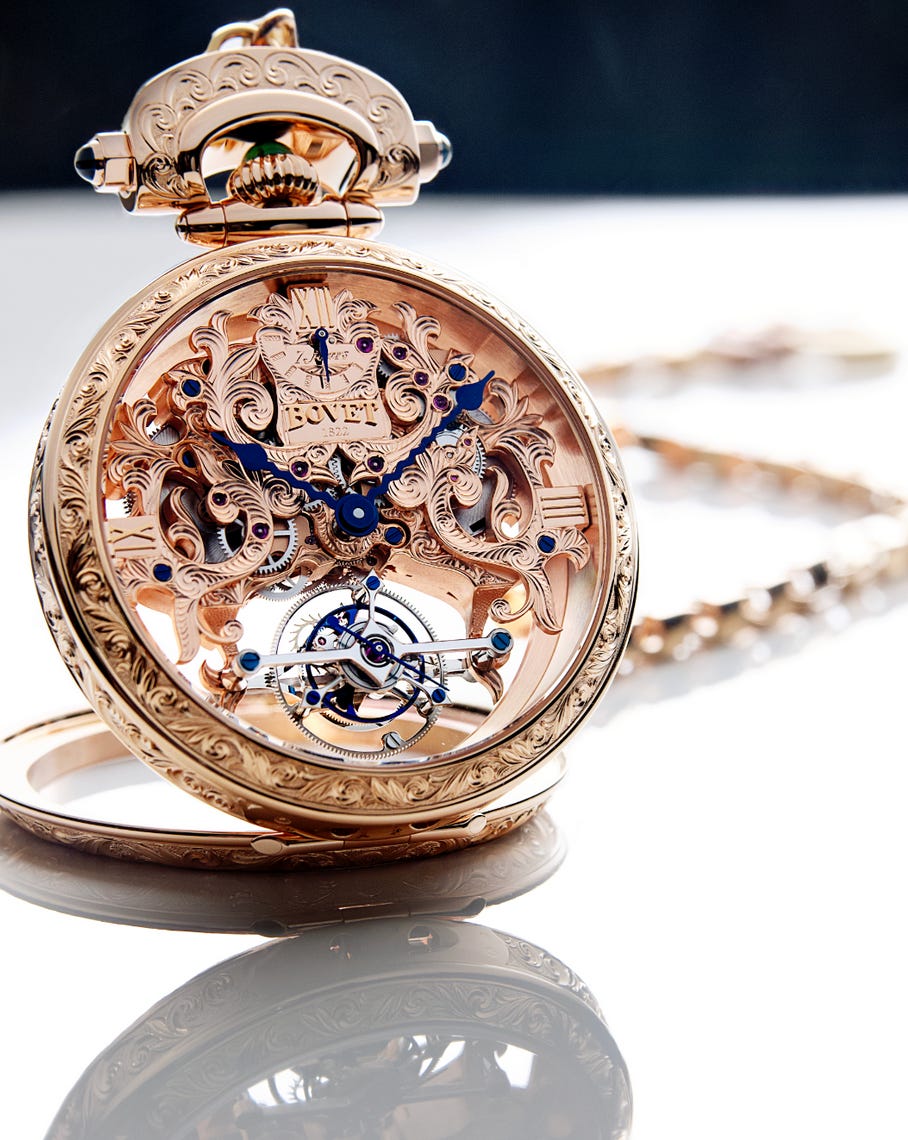
The art of engraving in watchmaking traces its origins to the Renaissance period, when craftsmen began adorning timepieces with intricate decorative elements. Engraving techniques further developed in the 17th and 18th centuries. An iconic example of the 18th century is a John Arnold’s pocket watch of 1768 circa featuring an ornate rocaille decoration. Different cultures have developed unique approaches to watch engraving, reflecting their artistic traditions and aesthetic sensibilities. European traditions, particularly those from Switzerland and Germany, emphasize meticulous geometric patterns and naturalistic motifs, while Asian engraving techniques often incorporate symbolic imagery and philosophical representations.
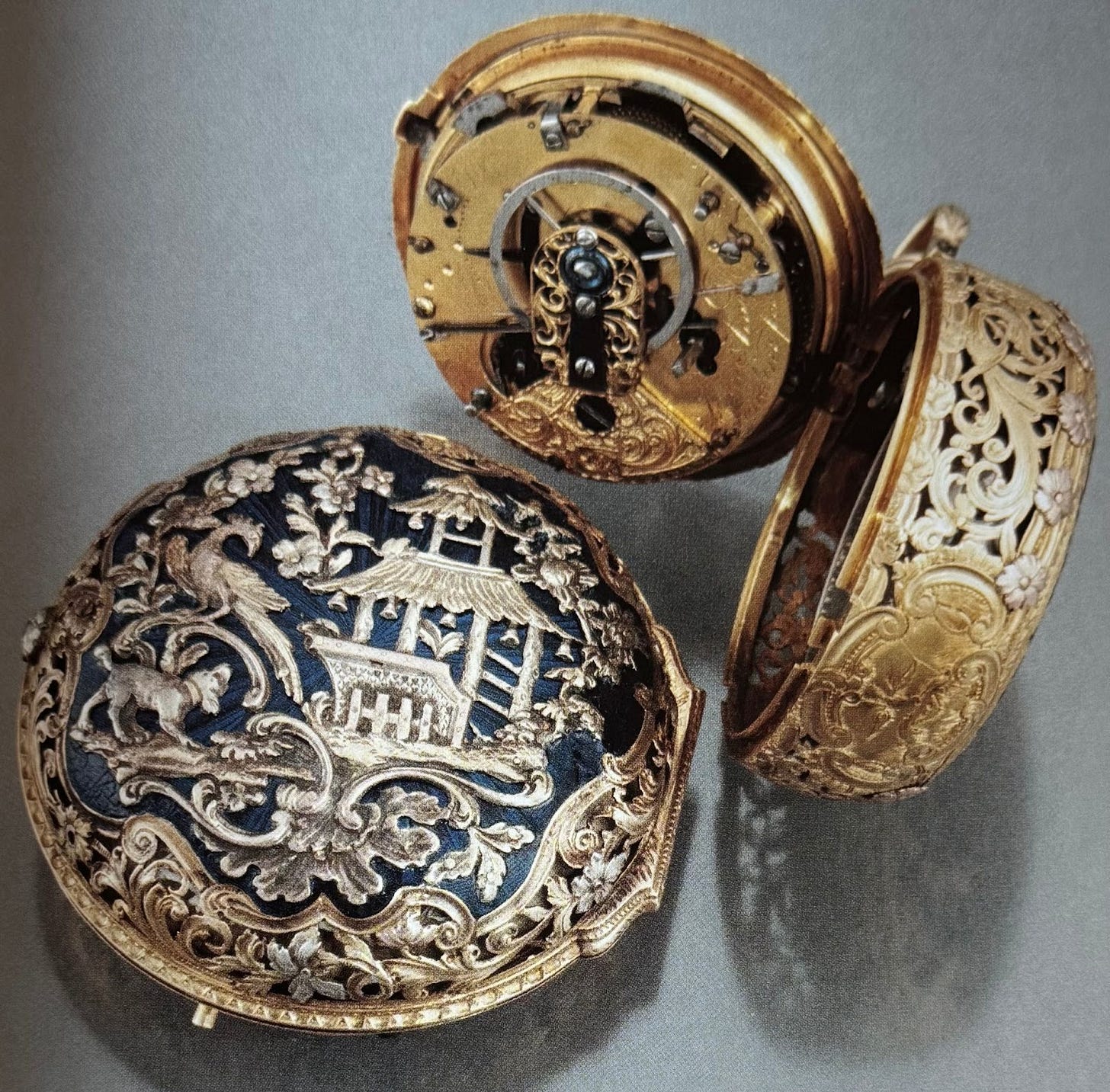
Engravers develop their unique styles through a combination of rigorous training, personal experimentation, and deep respect for traditional techniques. One example of this evolution is seen in the work of Jochen Benzinger, a German engraver known for his distinctive hand-skeletonized and guilloché designs. His work on Grieb & Benzinger watches showcases an unmatched level of hand-engraved artistry, often reminiscent of classical pocket watches but with a modern twist. The most skilled engravers can transform a watch's surface into a narrative canvas, telling stories through intricate designs that capture light, texture, and emotion.
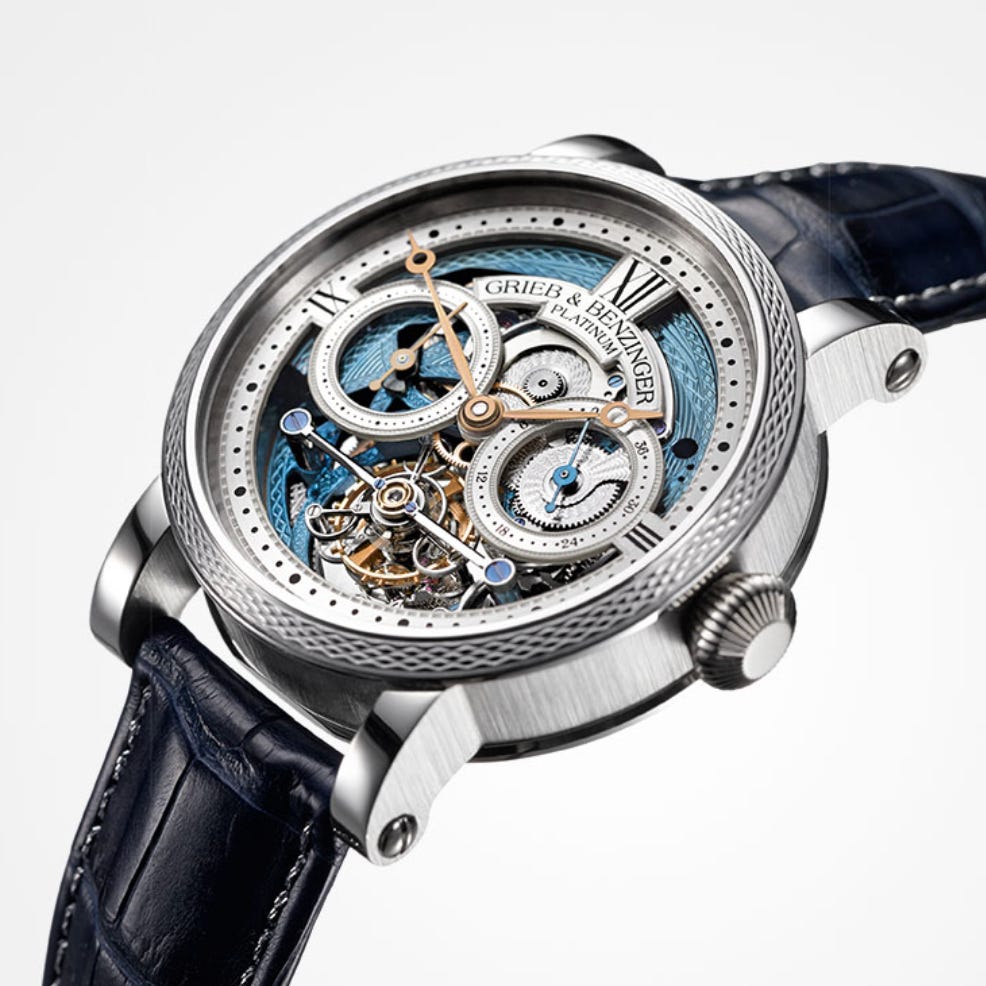
Mastering watch engraving requires extraordinary technical skills and patience. Artisans must overcome significant challenges: working with extremely small surfaces and delicate materials, maintaining consistent pressure, and developing near-perfect hand stability. An illustrative example is Vacheron Constantin’s “Les Aerostiers” collection, where master engravers create highly detailed relief engravings on minute watch components. Many engravers spend decades perfecting their craft, often apprenticing under master artisans to learn nuanced techniques that cannot be learned through formal education alone.
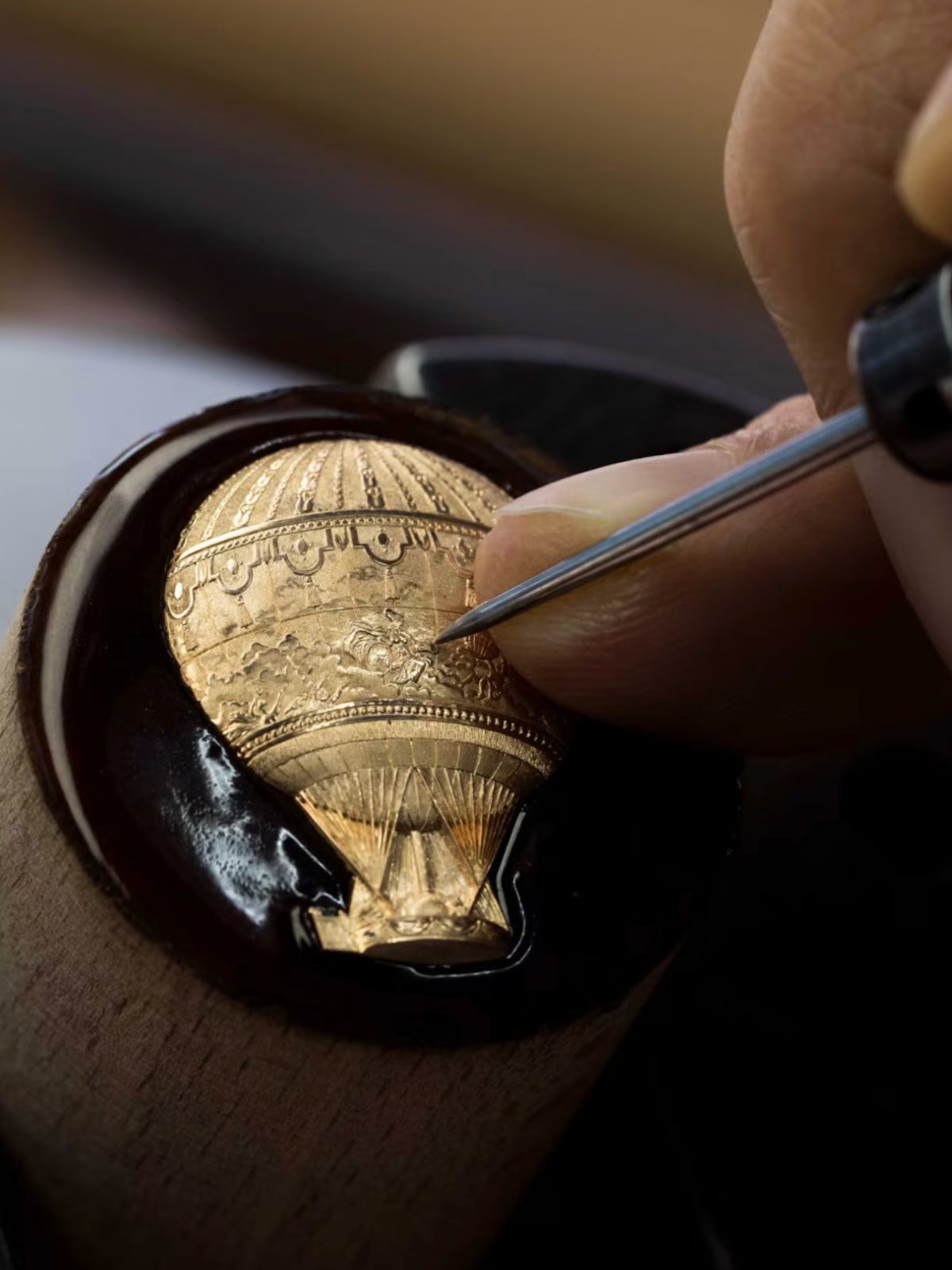
Engraving methods in watchmaking vary widely, each contributing unique visual and textural effects to a timepiece. Mechanical engraving involves the use of machines to carve intricate designs into metal surfaces with high precision, ensuring consistency across multiple pieces. This method is frequently used in luxury watches for dial and case decorations, offering uniformity without sacrificing artistic detail. Chemical engraving, or etching, relies on acids or other chemical agents to dissolve metal selectively, creating detailed patterns. This technique is often employed for deep and complex textures, particularly in watch components that require an antique or oxidized effect. Pantograph engraving is a technique where a master design is traced and mechanically reduced onto a smaller surface, allowing engravers to replicate intricate patterns with a high degree of accuracy. This method is commonly used for monograms and brand logos on watch cases and rotors. Laser engraving, a modern innovation, uses high-energy beams to precisely etch designs into metal surfaces, making it ideal for highly detailed and intricate imagery, as well as custom personalization. Lastly, handcrafted engraving remains the pinnacle of artistry in horology. Performed by skilled artisans using fine tools such as burins and gravers, hand engraving imbues each timepiece with uniqueness, capturing the essence of traditional craftsmanship.
These methods, whether used individually or in combination, add layers of artistry and craftsmanship to fine watches, through a range of techniques. Relief engraving for example involves carving designs that rise above the surface, creating a striking three-dimensional effect often seen in classical motifs. Intaglio engraving, in contrast, etches designs into the metal, allowing for shadows and fine detail, commonly used in coat-of-arms and monograms. Guilloché is a highly precise technique utilizing engine-turning machines to create intricate, repetitive patterns, frequently found on dials and case backs. Champlevé engraving involves carving recesses into the metal and filling them with enamel for a vivid, colorful contrast. Finally, micro-engraving pushes the limits of precision, allowing engravers to create minuscule designs, sometimes requiring magnification to be fully appreciated.
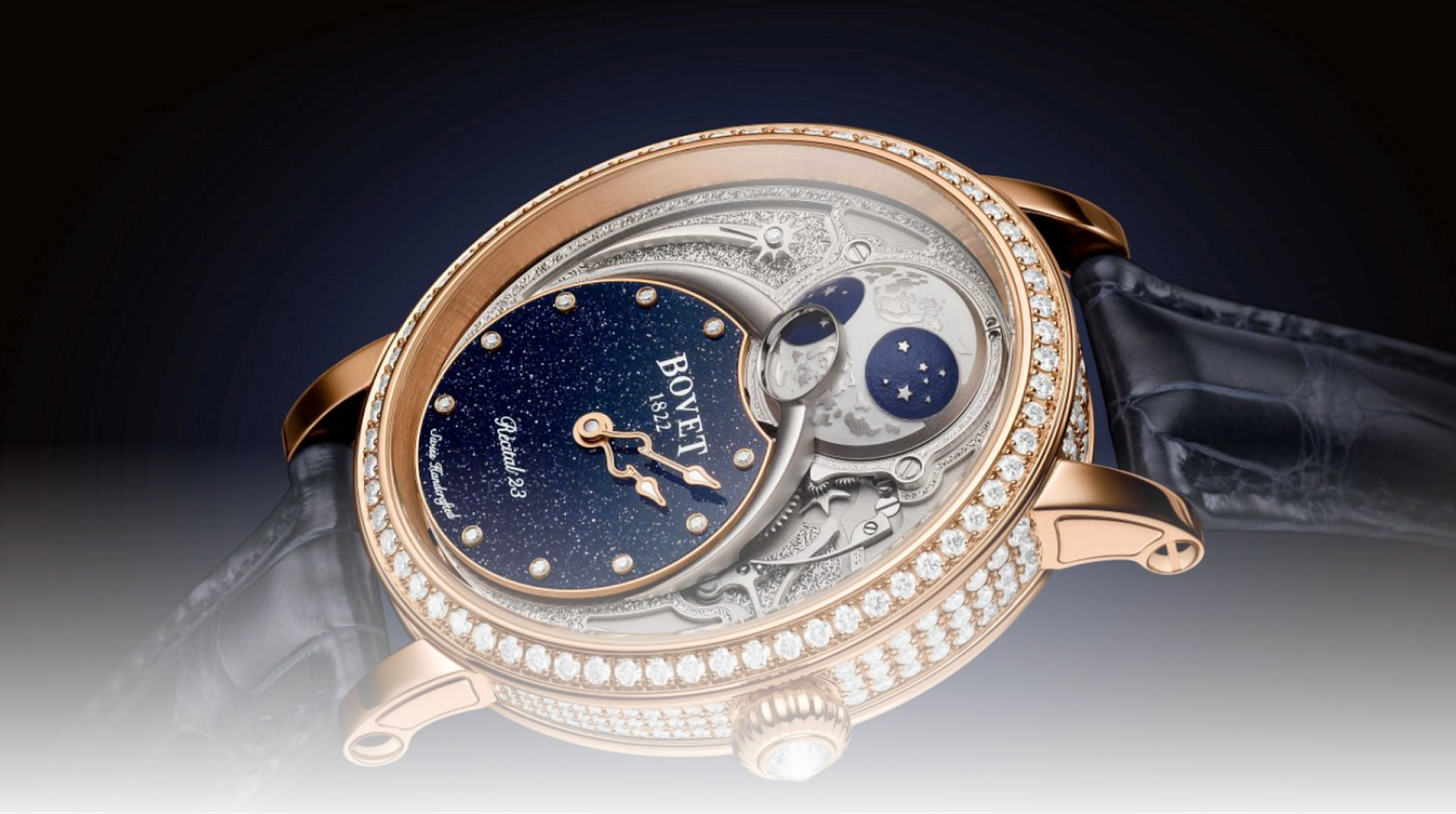
Engraving plays a crucial role in defining the identity of luxury watchmakers. Brands like Patek Philippe, Vacheron Constantin, and A. Lange & Söhne have built their reputations partially through exceptional engraving work. A prime example is the Lange 1 Tourbillon Perpetual Calendar Handwerkskunst, where traditional German hand-engraving techniques are used to craft mesmerizing, floral-inspired motifs on balance cocks and case backs. These intricate decorations serve multiple purposes: demonstrating technical mastery, creating unique brand signatures, differentiating products in a competitive market, and reinforcing brand heritage.
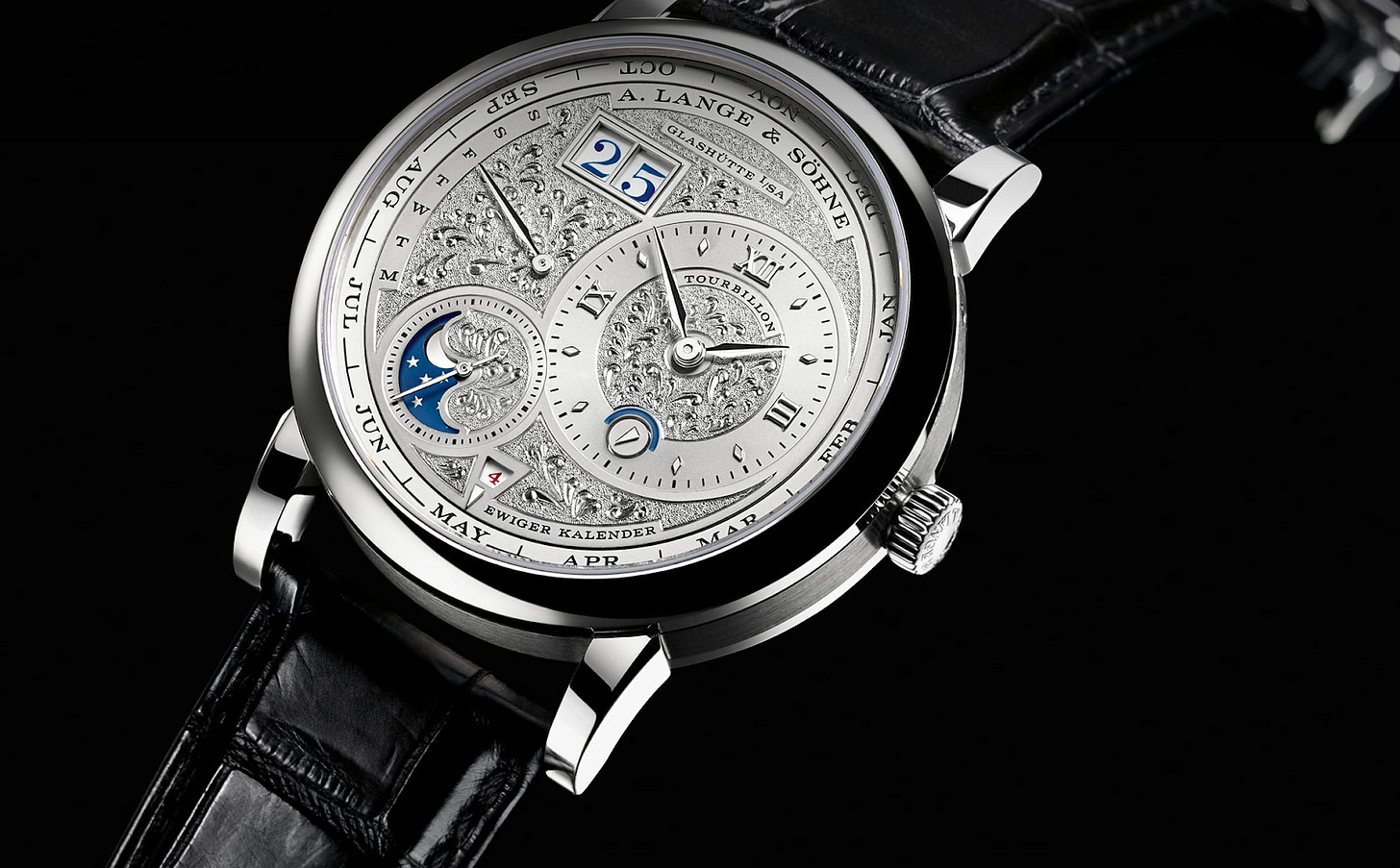
The aesthetic enhancement provided by expert engraving significantly impacts a watch's perceived and actual value. One watch that exemplifies this is the Patek Philippe Ref. 6002R Sky Moon Tourbillon, whose case is entirely hand-engraved with intricate arabesque patterns, adding both artistic and monetary value. Customized engravings can transform a standard timepiece into a deeply personal artifact, increasing its emotional and economic worth. Vintage watches with exceptional engraving often command premium prices at auctions, with collectors valuing the combination of technical precision and artistic expression.
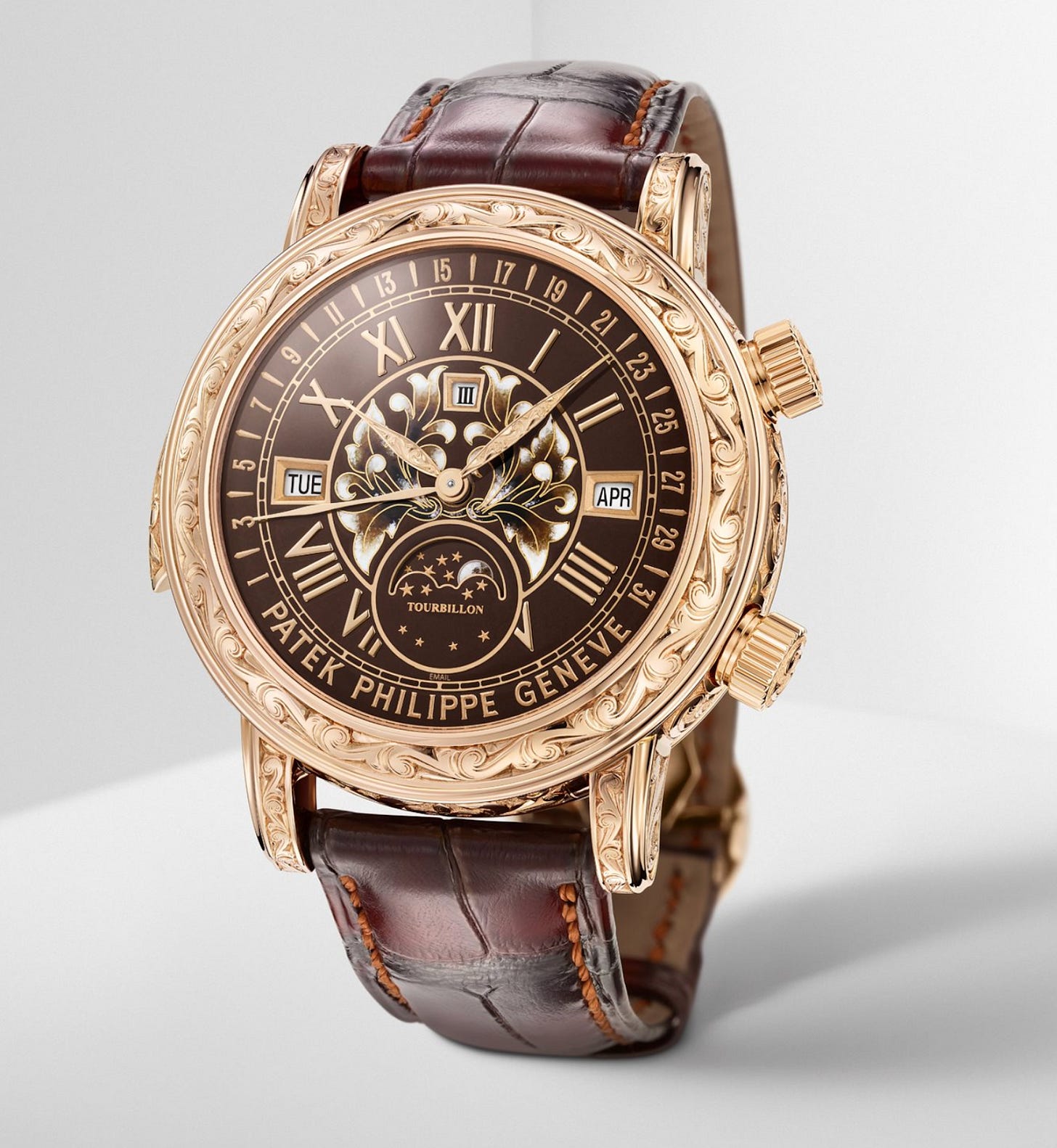
Modern technology is gradually transforming traditional engraving practices. Richard Mille, for example, has integrated laser engraving with its high-tech materials, producing unique aesthetic effects while maintaining the brand’s signature avant-garde style. While computer-aided design (CAD) and laser engraving techniques offer new possibilities, most luxury watch enthusiasts continue to value hand-crafted engravings, viewing them as irreplaceable expressions of human artistry.
Contemporary watch engraving has evolved to become a medium for personal storytelling. Customers can now commission bespoke engravings that commemorate significant life events, represent personal symbolism, or create unique family heirlooms. A remarkable example is Cartier’s Santos-Dumont “La Baladeuse” edition, where an engraving of Alberto Santos-Dumont’s pioneering aircraft adds historical depth to an already prestigious watch. This trend toward personalization has opened new market segments and deepened the emotional connection between timepieces and their owners.
Watch engraving represents far more than decorative embellishment. It is a profound art form that bridges technical mastery, cultural expression, and individual creativity. As technology advances and artistic traditions evolve, the art of watch engraving continues to captivate enthusiasts, collectors, and artisans alike. Consider the Vacheron Constantin Métiers d'Art collection, which showcases various engraving techniques inspired by historical motifs, reinforcing how watch engraving transcends time and culture. By transforming metal surfaces into intricate narratives, engravers do more than embellish watches—they create enduring pieces of cultural and personal significance that transcend their functional origins.
Author: Sergio Galanti


